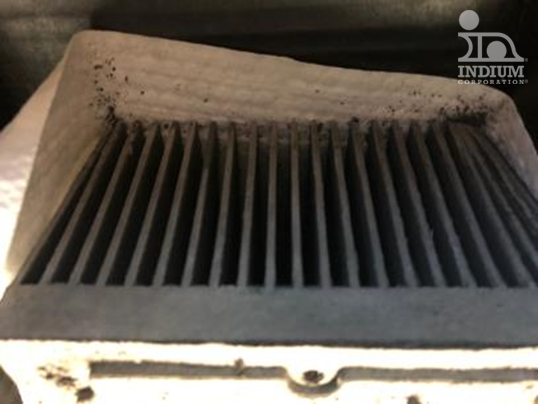Yesterday, in Part 2 ofour interview, Miloš mentioned how using a hybrid solid/liquid TIM provides benefits over thermal grease. Today we discuss the challenges to working with liquid metal, and how to address those issues.
Jim: What is your biggest challenge with this study?
Miloš: Actually, there are two big challenges. The first one is that liquid metals are, like any other metals, electrically conductive. That’s why they have to be contained; otherwisethey can cause short circuits which will cause theapplication to malfunction. The other challenge is the interaction between gallium and aluminum. Almost all common liquid metal alloys contain gallium, and gallium is very aggressive toward aluminum.


In the pictures above, we can see how an aluminum heat sink looks after liquid Indalloy#60 (75.5Ga/24.5In) was applied on top of itand then stored for seven days at 125°C. Gallium dissolved through aluminum grain boundaries and destroyed the integrity of the heat-sink. The reaction process of gallium and aluminum is not actually a corrosion process, even though it is commonly stated as corrosion. Using anodized aluminum instead can prevent this issue.
The effect that gallium has on bare aluminum may shock you, but it is important to note that gallium is easily contained by almost all non-metals, and evena few baremetals as well. For more on what metals can be directly used with gallium, please contact our Technical Support Engineers at [email protected].



